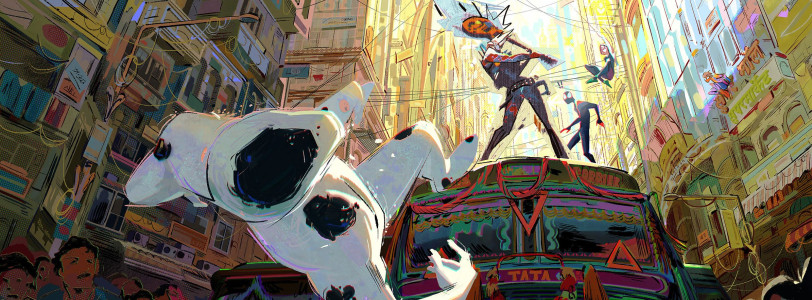Animation is becoming increasingly popular in the media, so why are companies like Netflix axing most of their (arguably) most popular animated shows only after one season? Why did HBO wipe multiple shows like Infinity Train and Mao Mao clean off their platform? For the same reason as any corporation, they simply thought it would not make them as much money. For years animators have been building the foundations of our childhoods, but these companies are not building the foundation to keep animation a stable job for millions of artists across the globe. This is the standing problem the animation industry has had for years, the mistreatment and underpayment of staff, in addition to the ridiculous workload expected of these animators each week makes this industry almost unliveable.
Despite animation being the life vest for the entertainment industry during the pandemic, companies like HBO and Netflix have decided to cancel and remove some of their most promising animated shows such as Inside Job and Infinity Train. The aftermath of Netflix’s disintegration of its animation department has led to many staff being laid off. Not only does this affect the livelihoods of many artists, but it also affects their portfolios. By canceling and removing these shows from streaming platforms, it removes artists’ credit, leading to them having an even more challenging time finding new jobs (and for newer artists, breaking into the industry is borderline impossible). This left many animators out of jobs for an extended period.
The erasure of hundreds of talented writers and animators working on HBO was simply because Warner Bros Discovery could classify them as tax-write-offs, completely cutting off the already low residuals being paid to the creators or anyone else who worked on those shows. Hollywood’s heartless treatment of animation as a medium clearly shows that it is perceived as secondary to its breadwinner, live action. Even to this day, writers in animation are still paid less than their live-action counterparts despite doing the same or even more complex work. It is even worse for animation professionals overseas, earning just over half of the salary professionals earn in Western animation. These studios overseas are constantly used by larger companies who want to outsource their animations for cheaper, taking advantage of the low pay and long hours these artists are willing to put in, often just barely able to pay for their day-to-day expenses.
The perception that ‘animation is for kids’ has stagnated creatives to utilize the medium for so much more than just ‘kids shows’ and when they are able to, it comes at a cost with long hours and heavy workloads. Even 2023’s most technically advanced animated film ‘Across the Spider-Verse' was a production hell because of its director Phil Lord. Due to the delays caused by the many changes, animators worked almost 70-77 hours per week for months to catch up with the workload. That is almost double the regular hours of work in a week, this led to over 100 animators leaving the production due to burnout and stress. What is even worse is that most of the work these animators had worked on had either been entirely scrapped from the film or reanimated by other artists, completely removing any trace of their hard work from the outcome. Although the film was a global success, the management and directing style was unsustainable for a lot of artists and will likely cause other projects by Sony such as the next sequel of Spider-Verse to be delayed as production is barely done, making the March 2024 deadline seem impossible.
Similarly, to the Spider-Verse crew, animators in Japan’s most well-known studios are also known to work almost 11 hours a day. However, for them, this is just their daily work and not just for a single project. This results in the average animator in Japan to be working around 230 hours a month, with some even opting to sleep at their desks. In extreme cases, well-known studios like Studio Madhouse were found to be violating labour laws as their employees were working over 400 hours for 37 consecutive days with no break. Animators working in these studios describe it as working in factories, constantly having to pump out episodes for the shows they were contracted to do. These inhuman working conditions, coupled with the low pay, make even the highest-paid animators barely make enough to start families or to just provide for their necessities like rent. Even with the boom of anime in pop culture recently, the artists making these hit shows like Attack On Titan or Jujutsu Kaisen are still being heavily underpaid even though the industry has made almost 3 trillion yen a year profiting off their work.
Larger studios can get around these labour laws by hiring freelance artists in Japan as there are simply too many shows to work on with not enough talent to go around. Hiring freelancers allows studios to continue to set these grueling deadlines with no benefits for the workers, keeping costs as minimal as possible. The entry-level pay for an in-between animator in Japan is roughly 200 yen, translating to less than $2 per drawing. This price given to art, most famously known for being incredibly detailed and meticulous, is almost laughable. Even with rough drawings, it can take up to an hour or more to complete to make sure the quality is up to par with the other frames in a sequence. The most skilled animators may still not be able to earn a livable wage, turning to other forms of income to stay afloat, such as selling their own merchandise or working on non-animation-related projects. This is utterly saddening because these extremely passionate artists are treated like machinery rather than individuals who provide us with some of the most life-changing forms of media for all ages.
The animation industry will continue to grow in the coming years however the treatment of the people working in the animation industry has to change in order to make these jobs sustainable for the millions of creatives pouring their souls into these shows and movies that we enjoy in our everyday lives. Animation has the potential for more than we can even imagine and will continue to push the boundaries of what is possible. This might show executives and studios that these artists’ hard work deserves much more than to be written off as a ‘tax write-off'. This might show audiences that it is a medium that deserves respect and not to be looked down upon as lesser than live action. As with any entertainment industry, some aspects make working almost unbearable but with the help of The Animation Guild (TAG), union members will continue to negotiate with studios for better working conditions and strive to pave the way for newer people looking for their way in the industry.
Sources/Articles I used:
Why Layoffs and Cancelations [] (IGN): https://www.ign.com/articles/why-layoffs-and-cancellations-have-sparked-industry-wide-worry-among-animators
Spiderverse artists quit: https://www.cbr.com/across-the-spider-verse-working-conditions-100-artists-quit/
Spiderverse "Death by a thousand paper cuts" (Vulture): https://www.vulture.com/2023/06/spider-verse-animation-four-artists-on-making-the-sequel.html
Studio Madhouse: https://www.animenewsnetwork.com/interest/2019-04-22/madhouse-production-assistant-says-he-worked-393-hours-in-one-month/.145990
Anime is booming. So why are animators still in poverty? (New York Times): https://www.nytimes.com/2021/02/24/business/japan-anime.html






0 Comments